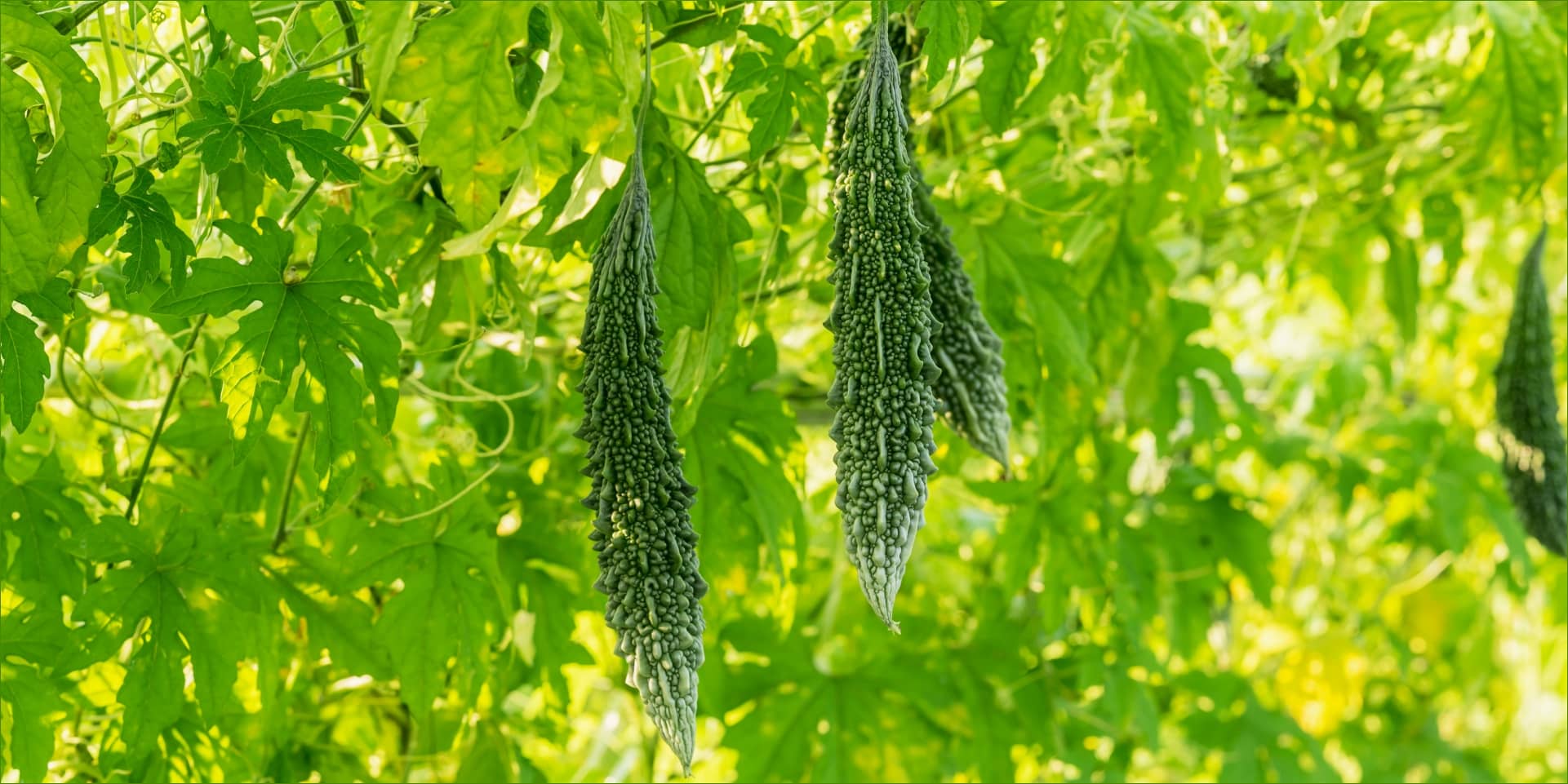
Karela - The Bitter Plant That Makes Your Life Better
If the word Karela sends a wave of Oh No’s across your home, you’re not alone! Bitter Gourd, or Karela, may not be a very popular vegetable preparation, especially among kids, but once you find out all the benefits of this underrated vegetable that doubles as a functional food and medicine, you will want to include it in your diet more and more often! Hard to believe? Modern scientific analyses have the answer.
The Wonder Vegetable
The scientific name for bitter gourd is Momordica charantia, but it is more commonly known as Karela in India and Bitter Melon in western countries. Karela is a vining plant that can get trained to climb on a trellis. It has huge dark green leaves. The plant bears yellow flowers, and the fruit is oval-shaped and tapered towards the ends. The skin of the fruit has a unique bumpy appearance. Karela is a summer vegetable, and the seeds of Karela can be used to grow new plants in a pot or a kitchen garden.
Bitter Gourd, or Karela, has stood the test of time. According to Ayurveda, Karela possesses therapeutic and medicinal properties. The Nighantus, a compilation of Indian medicinal plants dating back to 1500 to 1600 AD, describes Karela as being bitter in taste and useful in the regulation of digestion and metabolism, improving bowel function, aiding digestion of sugary substances, beneficial in anemia, diabetes, and removal of worms.
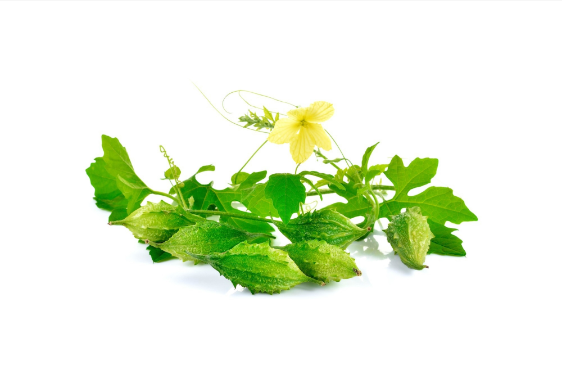
Besides this, the ancient Ayurvedic texts also mention the benefits of Karela in destroying unwanted metabolites, problems related to blood, oxidative disorders, fever, enzymatic disruptions, jaundice, and above all, diabetic symptoms. Karela’s hypoglycemic properties are now recognized and published all over the world.
What is Inside a Karela?
100 grams of Karela contains 34 calories with 13 mg sodium and 602 g potassium. The total carbohydrate content in karela is 7 g, and it contains 3.6 g of protein. From a nutritional point of view, Karela is a good source of Vitamins B and C, folic acid, magnesium, zinc, and phosphorus. It is also an excellent source of iron and dietary fiber. To put its nutritional value into perspective, Karela contains twice as much calcium as spinach, twice as much beta-carotene as broccoli, and twice the amount of potassium as compared to a banana.
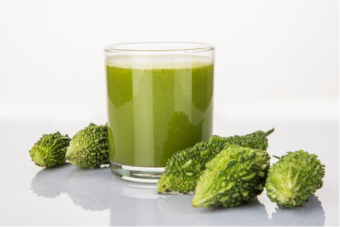
Karela has hypoglycemic, hypolipidemic, anti-inflammatory, and antioxidant properties. Karela also contains phenols, flavonoids, isoflavones, and glucosinolates. Combined, these properties make it a super vegetable with an abundance of medicinal and therapeutic benefits.
Health Benefits of Karela
The ancient medicinal systems of India, China, and the Middle East have held bitter gourd in high regard for its many healing properties. Even today, it is the first natural home remedy that is recommended to those suffering from Diabetes Mellitus because of its high hypoglycemic properties.
Karela aids digestion and improves gut health in many ways. It acts as a laxative and improves appetite. It can serve as a mild antiparasitic. It can also be used to treat respiratory problems and for managing musculoskeletal ailments like rheumatoid arthritis.
You can apply Karela extract on wounds and skin infections for a soothing effect and relief from itching and skin inflammations. The leaves of the bitter gourd vine are a rich source of potassium, calcium, magnesium, and iron.
Karela has a unique tendency of penetrating the blood and nervous system. This means that it can carry out its cleansing action directly from these locations. Besides improving your gut health, it boosts the body’s metabolism, flushes out toxins, and improves the overall health of vital organs such as the liver, pancreas, and spleen.
Due to its hypolipidemic activity, Karela can reduce the levels of LDL (bad cholesterol) in the blood. Experts also agree that this wonder vegetable, which contains monomer components, also shows immense promise in fighting various kinds of cancer as well.
Karela For Diabetes
After several modern scientific analyses of Karela’s antidiabetic properties, experts now confirm that Karela not only reduces the glycemic activity in blood, but it also regulates disturbed carbohydrate digestion, metabolism, and utilization of glucose. It regulates oxidative stress of diabetes with its insulin-mimicking active agent called Polypeptide-p or p-insulin. It is a phytonutrient present in a bitter gourd responsible for its hypoglycemic action. It is also called plant insulin because it works just like human insulin, lowers the body’s glycemic levels, and protects the pancreatic islet cells. Another bioactive compound called Charantin present in Karela promotes the release of insulin and helps in stimulating glucose utilization by muscles. It also suppresses key gluconeogenic enzymes.
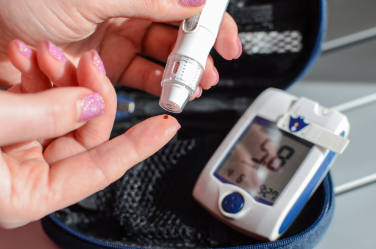
TasteGood Biscuits For Your Daily Dose of Karela
Now that you are aware of the many benefits of Karela, a natural question arises. How do I include Karela into my diet regularly? One option is to drink a glass of Karela juice regularly. However, if you are like many who despise the bitter taste of Karela, or simply do not want to go through the fuss of preparing the juice daily, you can add TasteGood Karela Biscuits as a mid-meal snack to your daily diet.
A 2020 study published in the Indian Journal of Nutrition has concluded that TasteGood biscuits have a medium glycemic index, so they can be safely consumed as a mid-meal snack by diabetic patients. They are baked, contain a high fiber content, have no added sugars, zero trans-fat, and zero cholesterol.
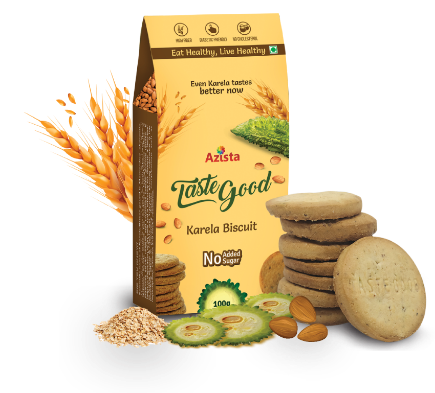
Every TasteGood biscuit contains the goodness and nutritional value of 20 g karela. Thanks to transformative food technology, the bitter flavor is modified and formulated into a delicious and healthy snack!
With a world of medicinal benefits packed into one vegetable, Karela is undoubtedly a wonder vegetable. Add Karela to your daily diet, and experience its therapeutic benefits yourself!

